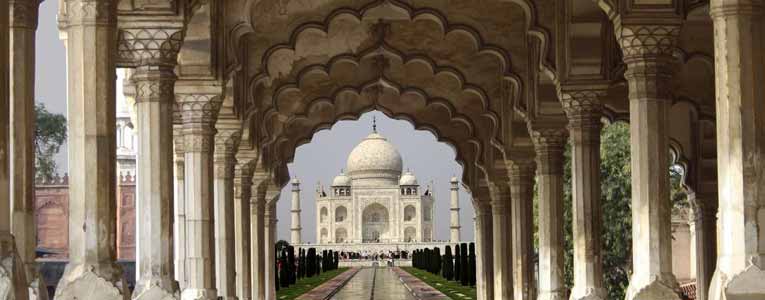


Taj Mahal, a universally admired UNESCO World Heritage Site, is a monument epitomizing love of the Mughal Emperor Shah Jahan for his wife Mumtaz. Taj Mahal is regarded as one of the eight wonders of the world.
The history of Taj Mahal has been an interesting topic of research and study for a long time. Many a travelers, after visiting this fabulous structure, look for the story behind its construction. It was built by Mughal Emperor Shah Jahan in memory of his beloved queen, Mumtaz. Emperor Shah Jahan was the ruler from 1628 to 1658, and within his lifetime, he built the tomb for his wife Mumtaz Mahal. Shah Jahan got married to beautiful Arjumand Bano Begum in 1612 A.D. He called his beloved wife Mumtaz Mahal as he wanted to refer to her as the crown of the Palace as she was so precious to him. This royal couple had 14 children. The queen used to accompany Emperor Shah Jahan everywhere, even on military campaigns and in one such campaign in Burhanpur in central India, Mumtaz Mahal died in 1631 shortly after giving birth to her 14th child.
Agra is about 200 km from Delhi (165 if you use the Yamuna Expressway) and is easily accessible by flights, roadways and train services. The travel time from Delhi to Agra by road is around 3 hours. In order to minimize the effects of pollution, vehicles are not allowed in the immediate vicinity of the Taj Mahal. Cars and buses have to park in parking lots a short distance away from the mausoleum complex and tourists can board non-polluting electric buses to reach the Taj Mahal. You can travel from Delhi to Agra, see the Taj Mahal, and return in one day. However, if you wish to see more of the sights of Agra and shop in the city's markets, then it is a good idea to stay overnight.
The best time to visit the Taj Mahal is in the autumn, winter and spring months from October to February. The peak summer months of May to July are best avoided because of the hot weather. The months of October and November, after the monsoon, offer the sight of the Taj at its mesmerising best, as the gardens are lush with greenery and the Yamuna river flows proudly past the Taj Mahal, swollen with post-monsoon rain. Both these factors enhance the overall experience of viewing the Taj Mahal.